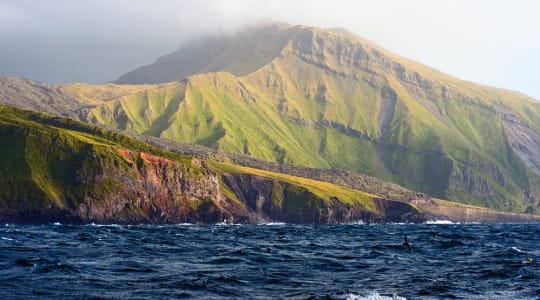
The Aleutian Islands are a chain of more than 300 small volcanic islands that extend westward from the southwestern tip of the Alaskan mainland into the Pacific Ocean. The islands cover an area of about 6,821 square miles (17,666 sq km) and stretch for about 1,200 miles (1,900 km) from the Alaska Peninsula to Attu Island, which is located near Russia's Kamchatka Peninsula.
The Aleutian Islands are part of the Pacific Ring of Fire, a region known for its high levels of volcanic and seismic activity. The islands were formed by the subduction of the Pacific Plate under the North American Plate, which has created a series of volcanic islands and seamounts that are rich in minerals and unique ecosystems.
The islands are home to a variety of wildlife, including seabirds, marine mammals, and fish. Many of the islands are also important breeding grounds for sea otters, seals, and sea lions. The indigenous people of the Aleutian Islands, the Aleut people, have lived on the islands for thousands of years and have developed unique cultural practices and traditions.
During World War II, the Aleutian Islands were the site of a major military campaign as Japanese forces attempted to invade the islands and establish a foothold in North America. The campaign lasted from June 1942 to August 1943 and resulted in the deaths of more than 1,400 American and Japanese soldiers.
Today, the Aleutian Islands are primarily known for their rugged beauty and unique ecosystems. They are a popular destination for wildlife enthusiasts, hikers, and adventurers looking to explore some of the most remote and wild places in North America.
Cross-Border Adventures Near Aleutian Islands
Discover cross-border adventures near Aleutian Islands. Explore neighboring countries with similar attractions and extend your travel experience across borders.

